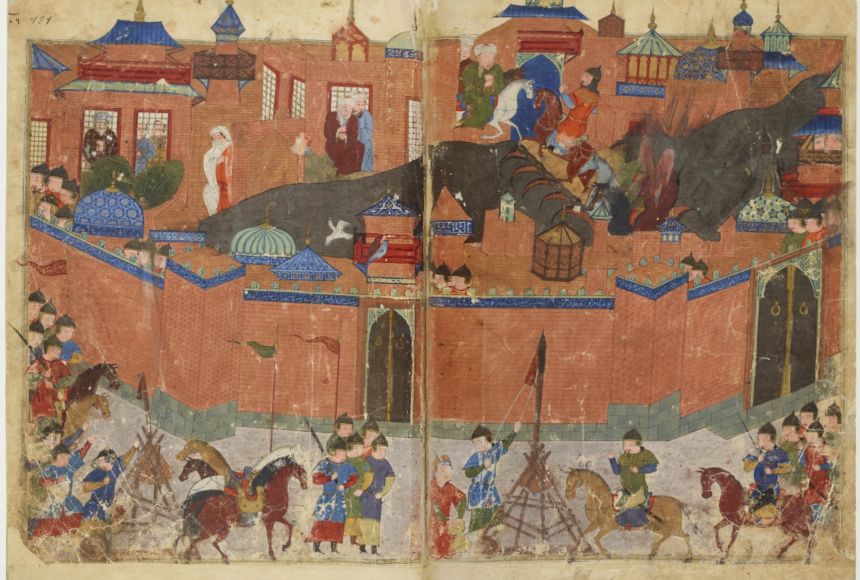ARTICLE
leveledARTICLE
The Mongol Horde: An Unstoppable Force
The Mongol Horde: An Unstoppable Force
The Mongol Horde enjoyed a fearsome reputation as an undefeated fighting force. They conquered China, terrorized Eastern Europe, sacked Baghdad, and tried to take on the Mamluks in Egypt.
Grades
3 - 12
Subjects
Geography, Human Geography, Social Studies, Ancient Civilizations, World History
Image
Mongol Taking of Baghdad
Among the conquests of the Mongol Horde in the 13th century was the taking of Baghdad. The siege of the city of in 1258 C.E. is shown here.
Photo of the print taken from the Bibliothèque nationale de France, Département des Manuscrits, Division orientale, Supplément persan 1113, fol. 180v-181.

Media Credits
The audio, illustrations, photos, and videos are credited beneath the media asset, except for promotional images, which generally link to another page that contains the media credit. The Rights Holder for media is the person or group credited.
Director
Author
Production Managers
Program Specialists
Producer
other
Last Updated
October 19, 2023
For information on user permissions, please read our Terms of Service. If you have questions about how to cite anything on our website in your project or classroom presentation, please contact your teacher. They will best know the preferred format. When you reach out to them, you will need the page title, URL, and the date you accessed the resource.
Media
If a media asset is downloadable, a download button appears in the corner of the media viewer. If no button appears, you cannot download or save the media.
Text
Text on this page is printable and can be used according to our Terms of Service.
Interactives
Any interactives on this page can only be played while you are visiting our website. You cannot download interactives.
